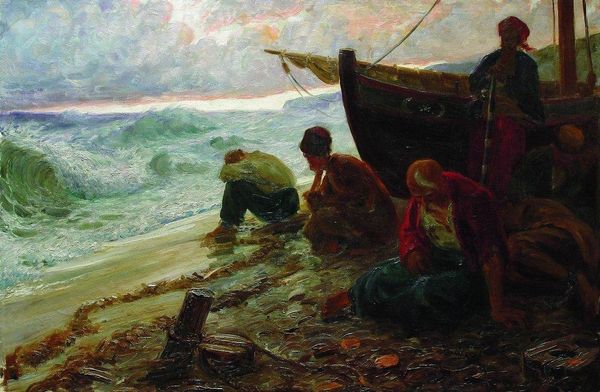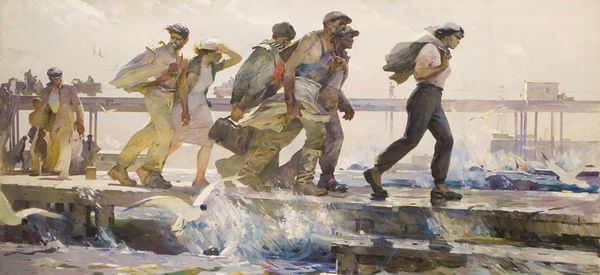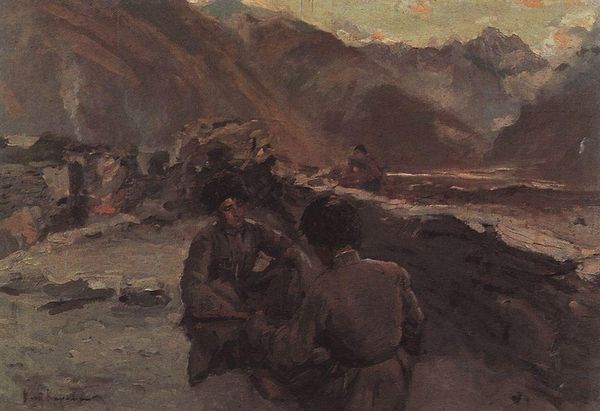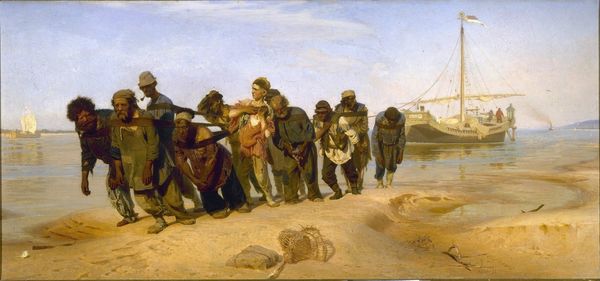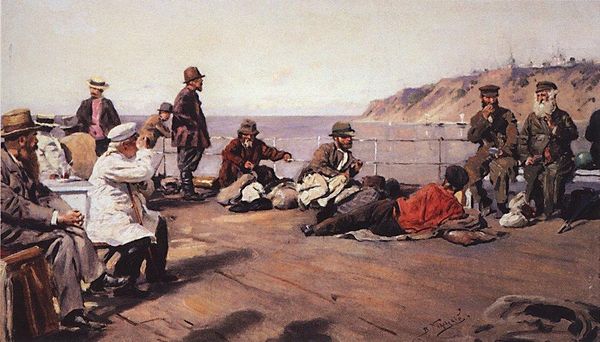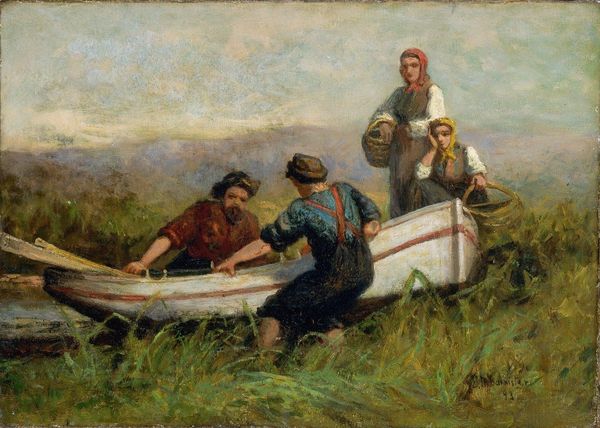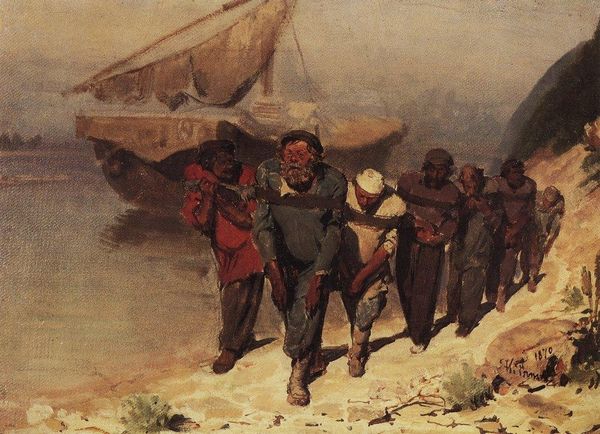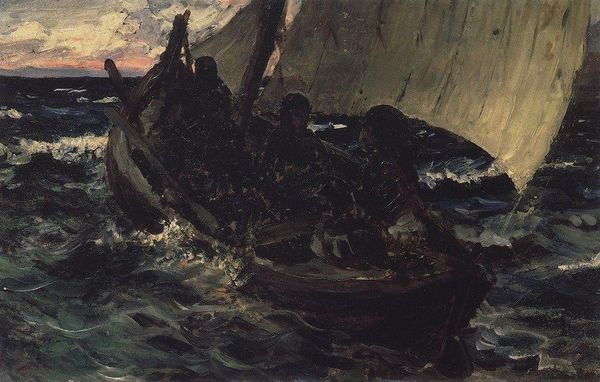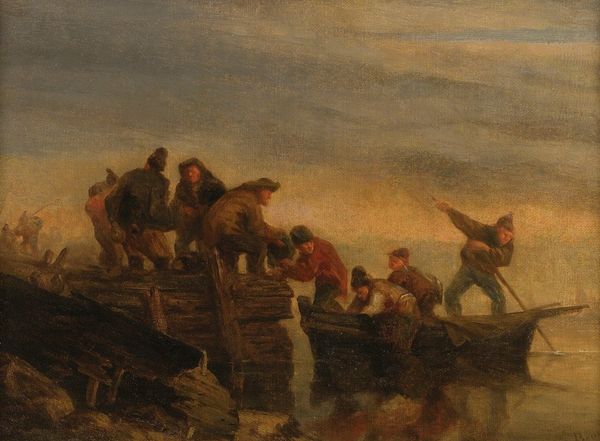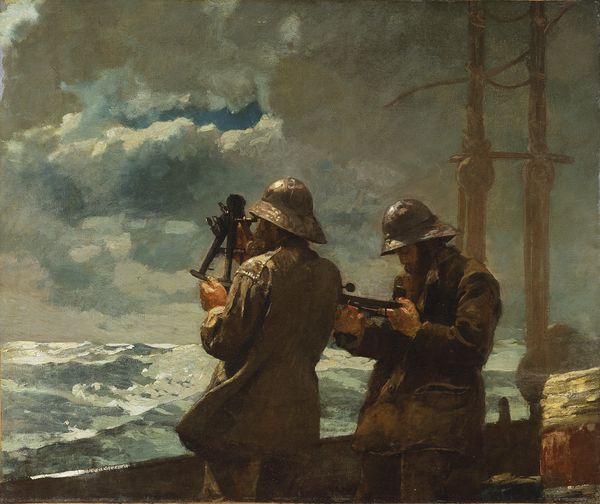
Dimensions: 62 x 97 cm
Copyright: Public domain
Editor: We’re looking at Ilya Repin’s “Haulers cross wade,” an oil painting from 1872. It strikes me as a very grounded, almost brutal depiction of hard labor. What do you see in this piece? Curator: For me, this painting is deeply rooted in the social and material conditions of 19th-century Russia. Notice the sheer physical strain etched on the faces of these haulers. Repin is making a statement about the exploitation of labor. How does the application of paint itself contribute to this reading? Editor: I see how the heavy brushstrokes and the muddy color palette seem to mirror the grueling nature of their work and the harsh environment. Curator: Exactly. Think about the means of production here. The oil paint, the canvas – these materials were available in a society built, in part, on the backs of laborers like these. Repin uses those very materials to expose that inequality. Are we to consider that avant-garde, however? Editor: I guess not! Do you think he consciously chose this style to highlight the material aspect of their struggle? Curator: Absolutely. By representing these men with such unflinching realism, almost emphasizing the physical cost of their work through his artistic technique, Repin challenges the conventional beautification of labor often seen in art. It's less about romanticism and more about confronting the viewer with the raw reality of their existence. Editor: I never considered the paint itself could be part of the message. This piece makes me think a lot differently now about art as social commentary. Curator: Indeed. Analyzing art through its material existence, as we’ve done here, reveals so much more than just aesthetics.
Comments
No comments
Be the first to comment and join the conversation on the ultimate creative platform.

